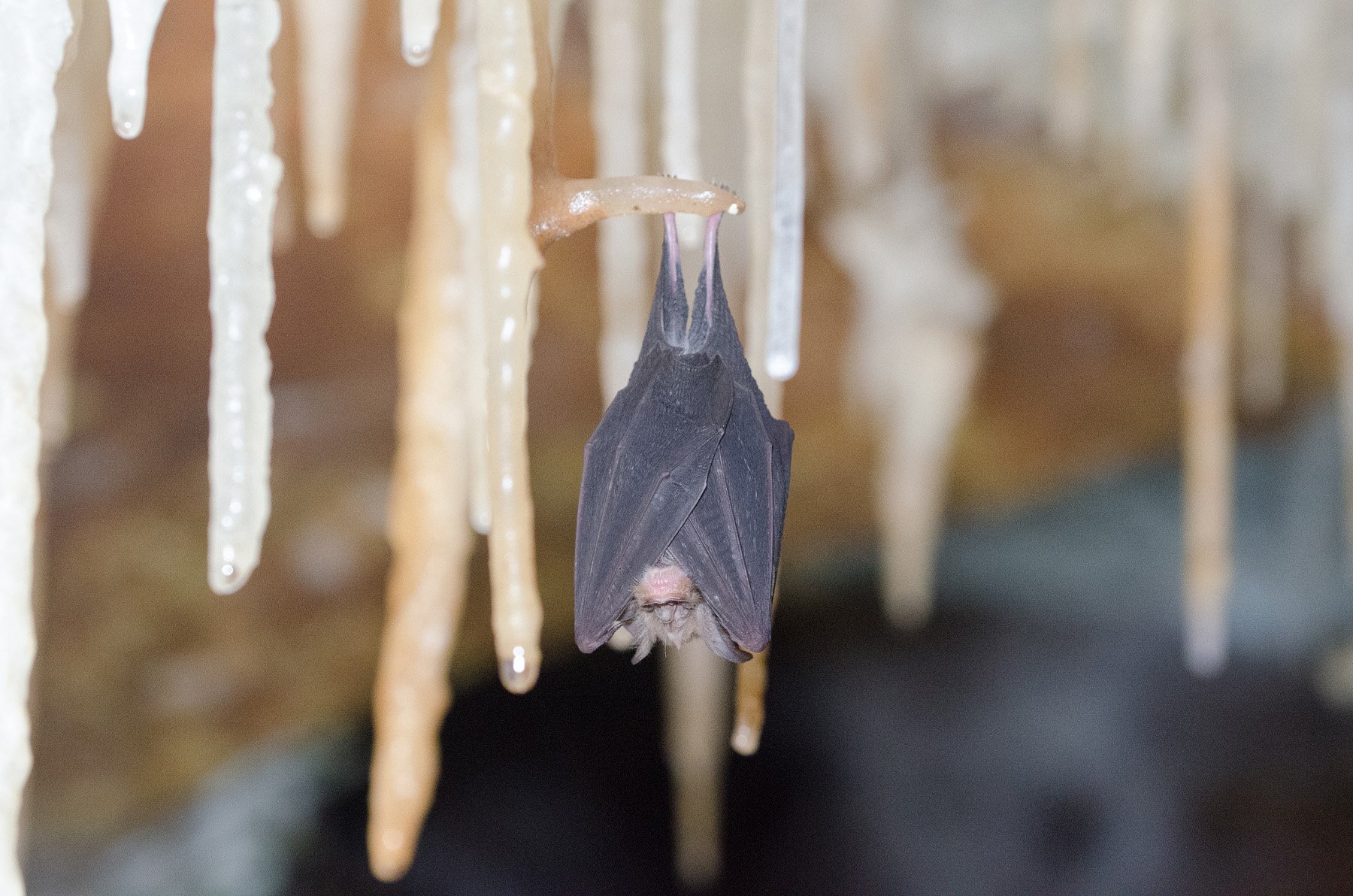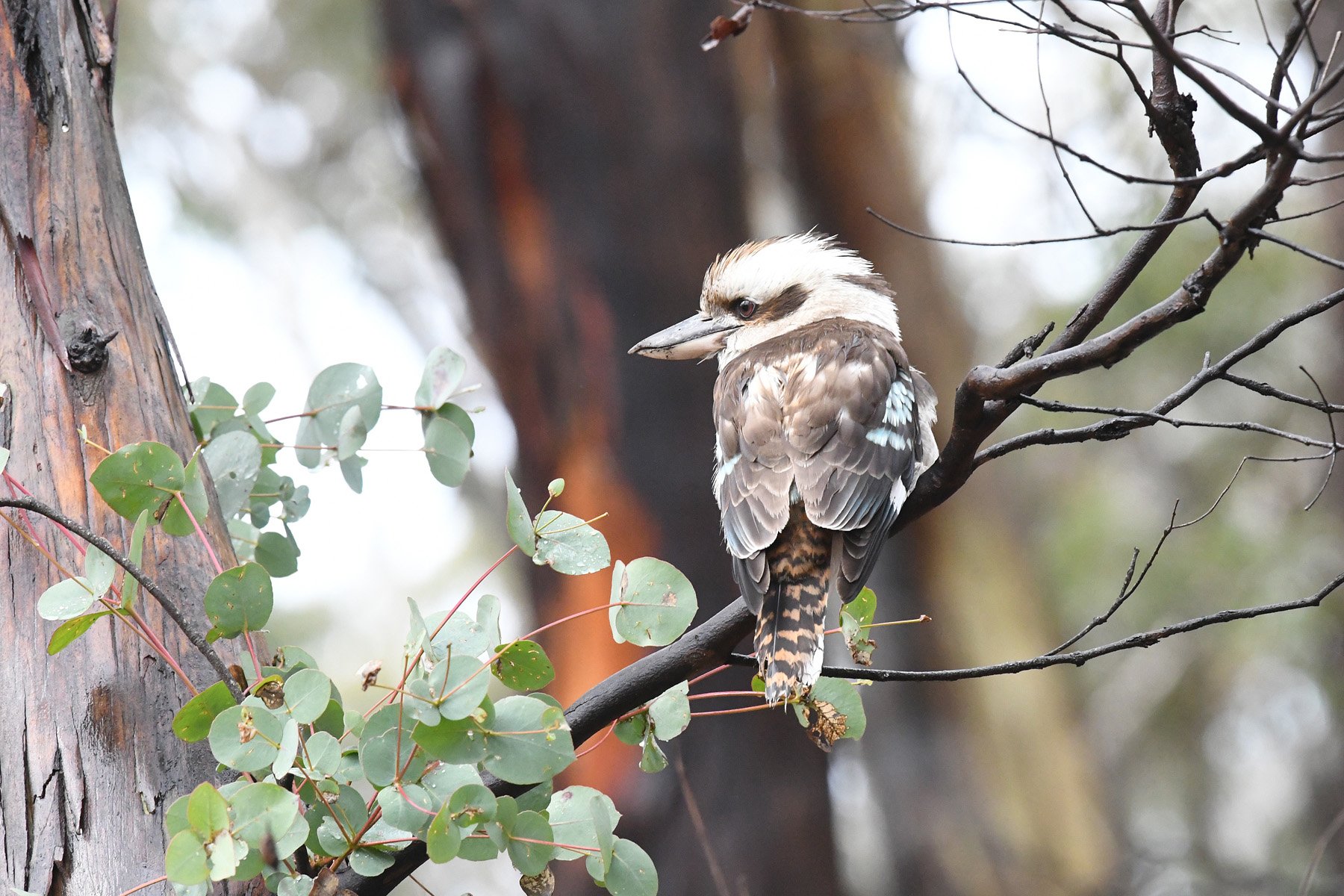
Tachyglossus aculeatus Echidnas roam over most of the Reserve, living life ‘in the slow lane’ as they search for ants, termites and other insects.

Delias harpalyce The Imperial Jezebel, a distinctive red, yellow, black and white butterfly, can be found along the Great Dividing Range.

Aquila audax Wedge-tailed Eagles are Australia’s largest bird of prey, often seen circling high over Jenolan’s hillsides.

Ornithorhynchus anatinus Platypuses are often seen at the Blue Lake, one of the best spots in Australia to catch a glimpse of this iconic species.

Intellagama lesueurii The large lizards you see at Jenolan are Eastern Water Dragons, often basking in the sun during the warmer months.

Rhinolophus megaphyllus Eastern Horseshoe-bats, one of three bat species seen in the caves, are identified by their horseshoe-shaped ‘nose leafs.’

Vombatus ursinus Bare-nosed Wombats not only build earthen burrows like other wombats at Jenolan, but sometimes even den in caves!

Intellagama lesueurii The large lizards you see at Jenolan are Eastern Water Dragons, often basking in the sun during the warmer months.

Egernia cunninghami Cunningham’s Skinks, one of our largest skinks, are seen daily along the tracks during the warmer months.

Menura novaehollandiae Superb Lyrebirds are heard regularly, especially during winter when male birds are calling to attract females.

Pachycephala pectoralis A male golden whistler have bright colours that stand out in the bush. Golden whistlers have distinctive whistling calls.

Meliphaga lewinii This lovely honeyeater was named after John Lewin, who illustrated the first books on Australian natural history.

Dacelo novaeguineae An Australian icon, the Laughing Kookaburra is a common sight (and sound!) at Jenolan.

Eulamprus quoyii Eastern Water-skinks are quite handsome, a deep shiny bronze with light and dark spots and stripes.

Platycercus elegans A small colourful cheeky parrot is often seen around Caves House.

Pseudechis porphyriacus The beautiful red-bellied black snake is often found near bodies of water like the Blue Lake.

Eopsaltria australis The cheery Eastern yellow robin is a common sight along McKeown’s Valley track.

Limnodynastes dumerilii Also called the Pobblebonk or Bull Frog. The call of this frog sounds like the plucking strings of a banjo.

Pseudonaja textilis The second most venomous snake in the world. The Eastern brown snake can even be seen on mild Winter days as low as 14 degrees celcius.

Callocephalon fimbriatum An endangered species, the Gang-gang Cockatoos mate for life.

Vanessa itea Also called the Australian Admiral and native to Australia, New Zealand, Lord Howe Island and Norfolk Islands. A very hardy species that sometimes can be seen all year round.

Geitoneura acantha It is a beautiful butterfly with distinctive ring marking on its hind wings often seen near the Blue Lake and River Walk.

Dasyurus maculatus The largest native mainland marsupial carnivore and a threatened species.

Wallabia bicolor Sometimes called the black wallaby, is often seen hopping along the road into Jenolan.

Malurus cyaneus Australia’s most loved bird but also the least faithful.
Dr Anne Musser
The wildlife photographs in this galley were taken by our Conservation and Campaigns Officer, Dr Anne Musser. Anne is a palaeontologist and platypus researcher with a passion for the natural world and has lived onsite at Jenolan for over ten years. She is also an artist and photographer and is seldom seen without her trusty camera!

